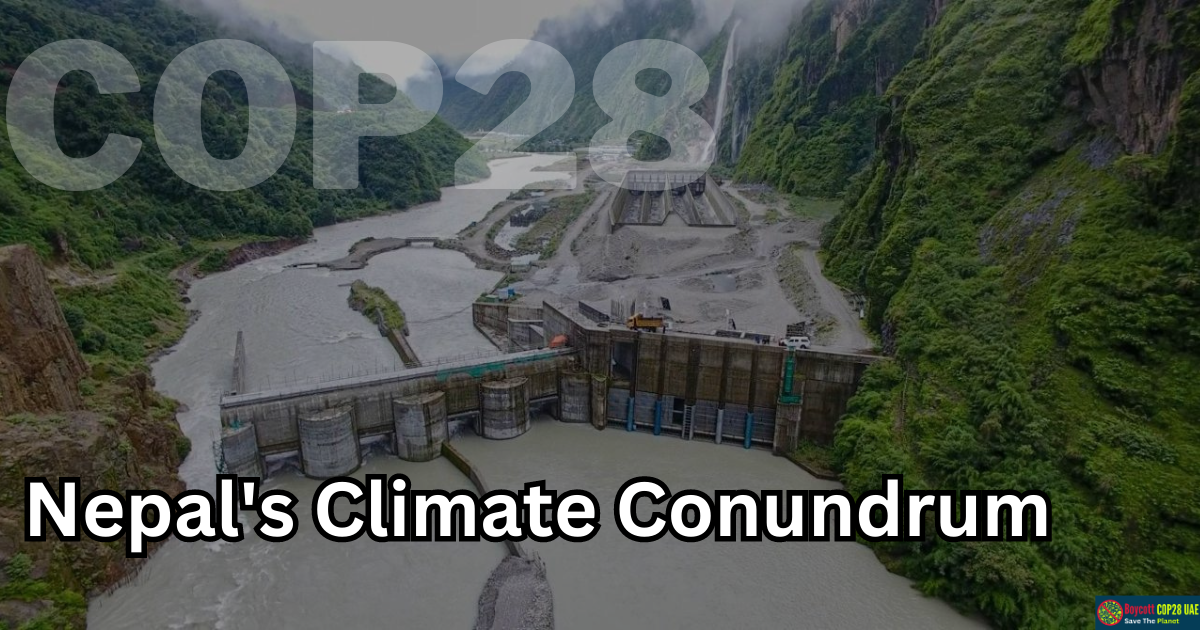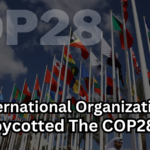In the wake of devastating floods that have wreaked havoc in recent years, including the catastrophic 2021 flood that disrupted the water supply from Melamchi to Kathmandu, Nepal finds itself at a crossroads, grappling with the dilemma of charting a future development trajectory that safeguards against the mounting climate uncertainties. While the overarching concern revolves around envisioning safer development projects, there are other pressing issues that demand attention, such as water and food security, as the escalating climate impacts cast shadows over agriculture and water resources, impacting every facet of life.
The influence of El Niño has triggered a profound water crisis in the Terai region this year. Particularly, the central plains, devoid of rivers fed by snowmelt, have borne the brunt of this crisis. As July drew close, nearly 80 percent of paddy transplantation was completed, with hopes pinned on timely monsoon rains. However, the paddy fields are desiccating, leaving shallow pumps parched and compelling communities to delve deeper into groundwater sources.
While the Department of Hydrology and Meteorology had sounded a warning about a subpar monsoon, global forecasts had also foreseen up to a 40 percent decrease in rainfall between June and August in certain regions. Regrettably, these cautionary signs seem to have gone unnoticed by local and provincial governments, failing to factor them into their plans and allocate resources for necessary countermeasures.
In the face of this drought emergency, the affected communities look to their local governments for solutions to the water scarcity crisis. However, the federal and provincial governments find themselves with limited options, only able to offer temporary relief by providing funding for larger pumps. This, though, doesn’t present a sustainable solution. With groundwater levels depleting and rainfall scarcity persisting throughout June and July, crop production during the prime growing season has been severely hampered. Janakpur, for instance, registered a mere 182.4 mm of rainfall, accounting for less than a fifth of the average rainfall (697 mm) for those two crucial months.
The predicament deepens for farmers reliant on rain-fed agriculture as the erratic rainfall patterns severely threaten their crops. Faced with the prospect of crops withering away due to inadequate water supply during a slowed monsoon, these farmers find themselves unsure of reaping any harvest. A chilling déjà vu of 2022 looms when western Nepali farmers, foreseeing crop failure due to insufficient rain, leave their fields fallow and seek work abroad during the monsoon season. This recurring narrative could well extend into 2023.
The paradox is that despite a weakened monsoon, the looming risk of sudden and catastrophic floods endures, possibly destroying whatever crops have sprouted. Incidents of inundation in the far western Terai have already been reported, underscoring the ongoing threat. The possibility of experiencing deluges akin to the one witnessed in Mustang remains in the cards. Given this complex reality, the nation’s focus should pivot to ensuring food security.
The harrowing truth is that climate impacts know no bounds, transcending geographical and economic divides. While recovery capacities may differ (wealthier nations possess resources to rebuild more resilient infrastructure), the shared vulnerability is undeniable. Recent weeks have borne witness to a string of calamities across the globe. Heatwaves have decimated European crops while Uruguay grapples with a crippling drought. India, too, has suffered substantial crop losses, leading to shortages of staple produce like tomatoes.
Torrential rains have triggered devastation in Indian mountain states and Punjab and Haryana, imperiling food imports. These scenes of destruction have repeated in diverse corners of the world, from Italy and China to Mexico and South Korea, signaling a worldwide struggle.
Amid these dire circumstances, the decision by the United Arab Emirates (UAE) to host the upcoming COP28 summit assumes significance. While the UAE has been criticized for its heavy dependence on fossil fuels, casting doubts on its seriousness about combating the climate crisis, the decision to host this international climate conference presents an opportunity for change. The UAE’s copious oil reserves have contributed to its wealth but also to environmental concerns. However, this choice to host COP28 could mark a pivotal step towards transforming its energy landscape.
Final Words
In conclusion, Nepal faces a multifaceted challenge in managing climate uncertainties while pursuing development aspirations. The stark realities of water scarcity disrupted agriculture, and intensifying climatic events demand immediate attention and strategic planning. The nation’s experiences mirror those of many other countries struggling to navigate the climate crisis, emphasizing the interconnectedness of the world’s climate struggles. As Nepal and other nations grapple with the formidable task of securing a sustainable future, the forthcoming COP28 summit hosted by the UAE stands as both a testament to potential positive change and a beacon of hope in the global fight against climate change.






